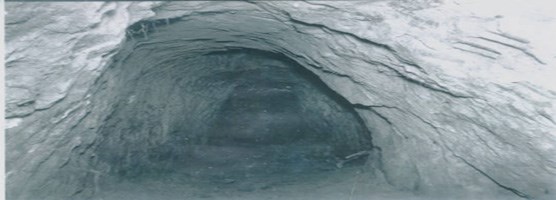
Ninety Six National Historic Site The One of a Kind Kosciuszko Mine Historical Background: The Mine has nothing to do with traditional mining, instead it was used by the Patriots (those fighting for independence from England) during the Siege of Star Fort at Ninety Six, May 22- June 18, 1781. The Loyalists (those living in the Colonies that were fighting for the King of England) held the Star Fort and General Nathanael Greene and his Patriot Army tried to take the Star Fort away from the Loyalists. Under the direction of Colonel Thaddeus Kosciuszko, the Chief Engineer of the Patriot Army, the Patriots dug a mine gallery out from the 3rd parallel. The idea was for the Patriots to dig the Mine underneath the Star Fort, pack it with gunpowder, and then blow it up, thus allowing the Patriots to storm the Loyalist held Star Fort. Patriot Sappers (trench diggers) and slaves borrowed from nearby plantations dug into the hard red clay to dig the mine. They had to suffer from the heat, bugs, broken shovels, Loyalist cannon fire, and Loyalist sorties (attacks made from a place surrounded by the enemy). After dark on June 9, 1781, a small group of Loyalists, under Lt. Colonel John Harris Cruger, attacked the Patriot sappers digging the mine. A British account stated that the Loyalists “discovered a subterraneous passage in which. . . miners were at work, every man of whom was put to death, and their tools brought into the garrison.” (The Royal Gazette,August 25-29, 1781) It was during this sortie that Colonel Kosciuszko was wounded in “his seat of honor” with a Loyalist bayonet, but was able to make it back to safety within Patriot lines. In the 1973, archeologists actually found a bayonet blade near where Kosciuszko was wounded. The Mine was never used for its intended purpose because the siege was lifted before it could be used. In the 1920s, the entrance to the Mine was stabilized with brick. During the 1940-60s, local children used the Mine as a playhouse before the National Park Service took over its care. In the 1970s, archeologists wrote that the Mine was still intact except that 35 feet of the right gallery had collapsed. The mine was opened in 2004 and again most recently in 2014. The University of South Florida's (USF), Alliance for Integrated Spatial Technologies (AIST), in collaboration with the National Park Service and the Southeast Archeological Center (SEAC), used 3D terrestrial laser scanning (TLS) and imaging along with geophysical remote sensing tools to provide accurate, precise and representative survey of the mine and environs that assists with conservation, management, and public interpretive development of this unique American Revolutionary period site features. 3D laser scanners in combination with global positioning systems (GPS) and other geospatial survey tools were used to create the most accurate model of the Star Fort and the tunnel beneath, creating a lasting digital record. The tunnels are approximately 2.4 to 3.5 feet in height (5.5 feet in the bell features) and 9 to 10.6 feet below the surface. The soldiers were only 30 feet shy of reaching the Star Fort before the siege was abandoned. As the above picture indicates shovel and pick marks can still be seen in the walls along with niches that were carved out for candles for the Patriots to work by. The Mine at Ninety Six National Historic Site is the only mine that was used during the American Revolution. The mine is not physically accessible but through the digital records becomes more accessible than ever before. |
Last updated: September 21, 2015
